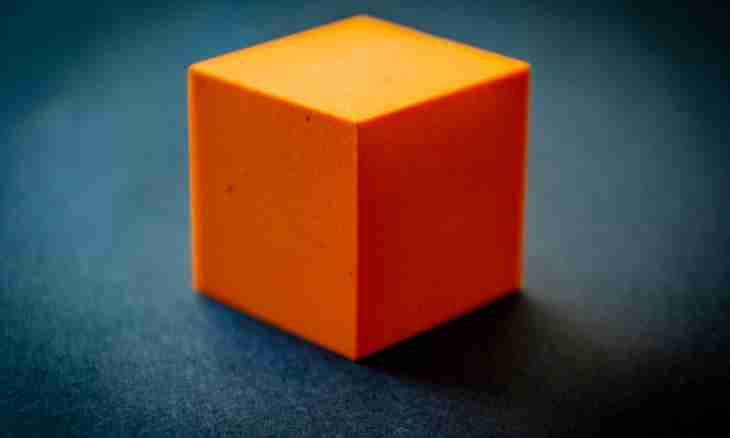The cube or hexahedron are a geometrical figure which represents a regular polyhedron. And, each of its sides is a square. To solve a problem on a cube, in stereometry, it is necessary to know its key geometrical parameters, such as edge length, surface area, volume, radiuses of the entered and described sphere.
It is required to you
- the textbook on geometry and mathematics.
Instruction
1. So, to find cube surface area, calculate the area of one side and increase it by their total, that is use a formula: Sp =6*x*x=6*x^2 where x is the length of an edge of a cube. Example. Let length of an edge of a cube be 4 cm, then the total area of a surface will be equal to Sp =6*4*4=6*4^2=96 см^2.
2. To calculate cube volume, it is necessary to find the area of the basis and to increase it by height (edge length). And as at a cube all sides and edges are equal, we receive the following formula: V=x*x*x=x^3. Example. Let length of an edge of a cube be 8 cm, then volume V=8*8*8=512 см^3. In mathematics there is it concept as figured number. From it expression also went: ""To cube number"" (to find the third degree of this number).
3. Radius of the entered sphere is on a formula: r=(1/2)*x. Example. Let the volume of a cube be equal 125 см^3, then the radius of the sphere entered in it is calculated in two stages. At first find edge length, for this purpose calculate a cubic root from 125. It will be 5 cm. And further calculate the radius of the entered sphere of r= (1/2)*5=2,5 see. By the way, the sphere will concern a cube exactly in six points.
4. Radius of the described sphere is calculated on a formula: R=((3^(1/2))/2) *x. Example. Let the radius of the entered sphere of r be equal to 2 cm, then to find the radius of the described sphere, it is necessary to find length of his edge, first: x=r*2=2^2=4 see, and secondly, already and radius: R= ((3^(1/2))/2)*4=2*3^(1/2) of cm. The cube will adjoin to the sphere in eight points. These points are its tops.
5. Length of diagonal of a cube can be calculated on a formula: d=x * (3^(1/2)). Example. Let length of an edge of a cube be equal to 4 cm, then, having used the above-stated formula, we receive: d=4 * (3^(1/2)) of cm. It is worth reminding that the diagonal of a cube call a piece which connects two symmetrically located tops and passes through its center. By the way, at a cube their four.
